1,071 news posts

Featured news
17 Jun 2019
US army research supports personalized soldier training
Research suggests that gamification can boost soldier training, but only if we take individual differences into account; Frontiers in Psychology

Featured news
13 Jun 2019
The app teaching anorexics to eat again
More patients with anorexia go into long-term remission by re-learning how to eat, than through CBT or drugs; Frontiers in Neuroscience

Featured news
11 Jun 2019
What’s your poison? Scrupulous scorpions tailor venom to target
Scorpions adapt their stinging, stingers and sting contents to minimize the costs of venom use; Frontiers in Ecology and Evolution
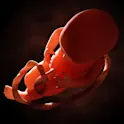
Featured news
05 Jun 2019
The bacteria building your baby
Exposure to influential bacteria begins before we are born, new evidence confirms; Frontiers in Microbiology

Featured news
03 Jun 2019
Edible insects? Lab-grown meat? The real future food is lab-grown insect meat
Lab-grown insect meat – fed on plants, and genetically modified for maximum growth, nutrition and flavor – could be a superior green alternative for high volume, nutritious food production. Image: Shutterstock. Cultured insect tissue could combine the planet-saving best of insect farming, GM livestock, labriculture and plant-based meat substitutes — by Matthew Prior, Frontiers science writer Livestock farming is destroying our planet. It is a major cause of land and water degradation, biodiversity loss – and of course, climate change. Several potential solutions have been proposed. Popular options are plant-based diets, insect farming, lab-grown meat and genetically modified animals. Which is best? All of these combined, say researchers at Tufts University. Writing in Frontiers in Sustainable Food Systems, they explain why lab-grown insect meat – fed on plants, and genetically modified for maximum growth, nutrition and flavor – could be a superior green alternative for high volume, nutritious food production. Possibilities for Engineered Insect Tissue as a Food Source► Read original article► Download original article (pdf) Alternatives to conventional meat farming “Due to the environmental, public health and animal welfare concerns associated with our current livestock system, it is vital to develop more sustainable food production methods,” says lead author Natalie Rubio. […]

Featured news
31 May 2019
Magnets can help AI get closer to the efficiency of the human brain
New brain-like networks could help robots approach human-like efficiency at object recognition tasks; Frontiers in Neuroscience

Featured news
31 May 2019
Changes to immune genes link paternal smoking with childhood asthma
Children exposed to paternal tobacco smoking before birth are more likely to develop asthma – and associated changes to immune genes predict the level of risk

Featured news
28 May 2019
Vitamin D study sheds light on immune system effects
Researchers find vitamin D causes dendritic cells to produce more of a molecule called CD31 on their surface, which hinders activation of T cells; Frontiers in Immunology

Featured news
24 May 2019
Vietnam can reduce emissions, save $2.3 billion by 2030 in agriculture, forestry and land use
Through cost-saving practices for coffee, rice, corn and livestock production, Vietnam can take steps to meet Paris Agreement commitments, says a study that highlights climate action potential for agriculture, forestry and land use in SE Asia; Frontiers in Sustainable Food Systems
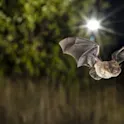
Environment
23 May 2019
How light from street lamps and trees influences the activity of urban bats
The team found that the response of bats to artificial light was intensified in areas with high tree cover. Credit: Christian Giese. A German study sheds new light on how exactly ultraviolet (UV) emitting and non-UV emitting street lamps influence the activity of bats in the Berlin metropolitan area, and whether tree cover might mitigate the effects of light pollution — by Forschungsverbund Berlin Artificial light is rightly considered a major social, cultural and economic achievement. Yet, artificial light at night is also said to pose a threat to biodiversity, especially affecting nocturnal species in metropolitan areas. It has become clear that the response by wildlife to artificial light at night might vary across species, seasons and lamp types.A study conducted by a team led by the Leibniz Institute for Zoo and Wildlife Research (Leibniz-IZW) sheds new light on how exactly ultraviolet (UV) emitting and non-UV emitting street lamps influence the activity of bats in the Berlin metropolitan area and whether tree cover might mitigate any effect of light pollution. The study is published in the scientific journal Frontiers in Ecology and Evolution. Tree Cover Mediates the Effect of Artificial Light on Urban Bats► Read original article► Download original article (pdf) Natural sunlight […]

Featured news
22 May 2019
How the devil ray got its horns
A new study shows that the manta ray’s distinctive hornlike cephalic lobes, rather than being separate appendages, have their origins as the foremost part of the animals’ fins, modified for a new purpose. Credit: Photo taken by Jackie Reid. Courtesy of the NOAA Image Library. New study by SF State biologists reveals the origins of a distinctive fish feature — by San Francisco State University If you ever find yourself staring down a manta ray, you’ll probably notice two things right away: the massive, flapping fins that produce the shark cousin’s 20-foot wingspan and the two fleshy growths curling out of its head that give it the nickname “devil ray.” A new San Francisco State University study shows that these two very different features have the same origin — a discovery that reflects an important lesson for understanding the diversity of life. “Small tweaks in early development can contribute to larger differences in how animals’ bodies are laid out,” explained San Francisco State Professor of Biology Karen Crow. How the Devil Ray Got Its Horns: The Evolution and Development of Cephalic Lobes in Myliobatid Stingrays (Batoidea: Myliobatidae)► Read original article► Download original article (pdf) For Crow and her graduate student John Swenson, […]
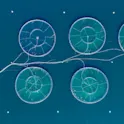
Featured news
21 May 2019
Cardiorespiratory fitness of farmed Atlantic salmon unaffected by virus
The respiratory systems of Atlantic salmon function normally despite them carrying a virus that infects red blood cells; Frontiers in Physiology
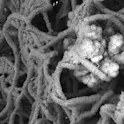
Featured news
20 May 2019
Sedimentary, my dear Johnson: is NASA looking at the wrong type of rock for clues to Martian life?
Scientists at the Swedish Museum of Natural History have begun compiling an atlas of fossils in volcanic rock, to guide where and what to look for in the search for Martian life; Frontiers in Earth Science

Environment
17 May 2019
Scientists propose rethinking ‘endangered species’ definition to save slow-breeding giants
Researchers at the Smithsonian Institute have proposed a ‘demographic safe space’ for Asian elephants, to improve conservation of these and other large, slow-breeding animals; Frontiers in Ecology and Evolution
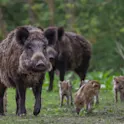
Featured news
16 May 2019
Vaccine for African swine fever may save our bacon
New study shows wild boar can be immunized against the most significant worldwide threat to the swine industry by a vaccine administered via their food; Frontiers in Veterinary Science